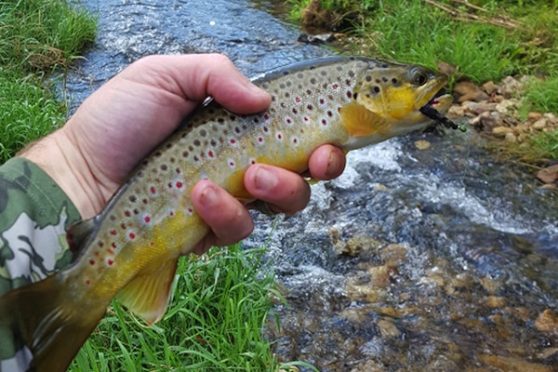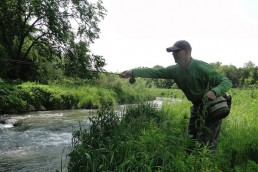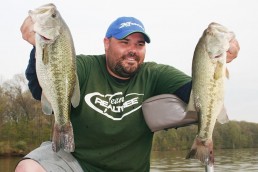Nymphing Trout in Dirty Water: What to do in the Driftless
SHARE THIS POST
On the Fly
By
Dave Anderson
For avid trout anglers, it’s not uncommon to read stories of fabled Western waters enduring springtime runoff after a winter of unusually heavy snowpack in the mountains. This year is a prime example of that, as snowpack in many areas is well over 100 percent of the normal amount, causing rivers to swell and become unfishable for weeks at a time.
Fortunately, for those of us living in the Midwest, we don’t have to typically endure weeks of turbid water and unfishable trout streams. Last summer was a great example of how quickly conditions can change. By early June, southeast Minnesota was hit with periods of significant rainfall, causing flooding in low-lying areas. For the trout angler, that means that large portions of certain trout streams were affected. But it also changed how to most effectively catch trout.
So, what is the best game plan when you get stuck by Mother Nature?
There are several tactics I employ when I know I’m faced with the prospect of dirty water. The first is relatively simple, but efficient, and that is to fish watersheds that are small in length and then focus on the upper headwaters. These will clear the fastest of all and are rarely, if ever, dirty.
Accessing topographical maps, Google maps, or doing some early-season scouting, is a great way to get a better view of streams and what to expect. An effective method over years in the area is to drive to these streams and bounce from one valley to the next to see water clarity first hand.

A nice small-stream brown trout caught in dirty water.
Fly fishing headwaters can be challenging, as streams are typically very small as in only a few feet in width. Casting accuracy and stealth are magnified in this type of approach. However, if you can get on that favorite headwater stretch as the water is clearing and trout are less skittish and aggressively feeding, the reward can be unforgettable. This is a chance to tangle with some trout that you may not have been able to entice when the water is crystal clear.
A second approach I take during periods of heavy rains is how I fish. I’ve written about the effectiveness of using streamer patterns in past issues. Fly fishing off-colored water with a streamer pattern is an ideal way to not only catch a high volume of fish, but it also affords you the chance to hook-up some large trout. It’s not a mystery that some of the largest trout fly anglers land in the Midwest come on a variety of streamer patterns: woolly buggers, sculpin patterns and some of the Kelly Galloup-inspired patterns such as the Zoo Cougar, Butt Monkey and articulated flies that employ more than one hook. Despite Driftless-Area invertebrates being relative small in size, hungry trout will aggressively hammer 4- to 5-inch streamers under the right circumstances.
Another obstacle you may have to overcome is the high water that often comes with dirty water. We do not get long periods of high water in southeast Minnesota on our trout streams other than the main rivers of the Whitewater and Root. The challenges of fishing high water can be overcome with a few simple strategies.
Are you enjoying this post?
You can be among the first to get the latest info on where to go, what to use and how to use it!

Clearer stream headwaters are great places to fish during dirty-water periods.
First, fish the edges of tail-outs of runs and pools where fish will have an easier time holding. Nymph fishing is probably the easiest way to fish in high water, but I always make sure I’m using bigger flies and that I add enough weight to get the fly down. In my experiences with higher water, trout often hold lower in the water column, so getting flies down is essential.
Hopefully, you don’t have to encounter high and dirty water on your next visit to the Driftless Area, where Minnesota, Wisconsin and Iowa converge. But if you do, employing a few of these basic strategies outlined will up your chances of success. MWO
Dave Anderson has lived in southeast Minnesota his entire life. He started fly fishing in the early 1990s and has guided ontheflyguiding.com in the area since 1998.
MWO
SHARE THIS POST
Did you enjoy this post?
You can be among the first to get the latest info on where to go, what to use and how to use it!
Dave Mull
Dave Mull of Paw Paw, Mich. has spent his career communicating the outdoors experience and runs Inner Viking Media. He enjoys kayak fishing for anything that swims in the lakes and rivers of the Midwest and beyond, and even uses his MirroCraft, from time to time. Available for seminars.



